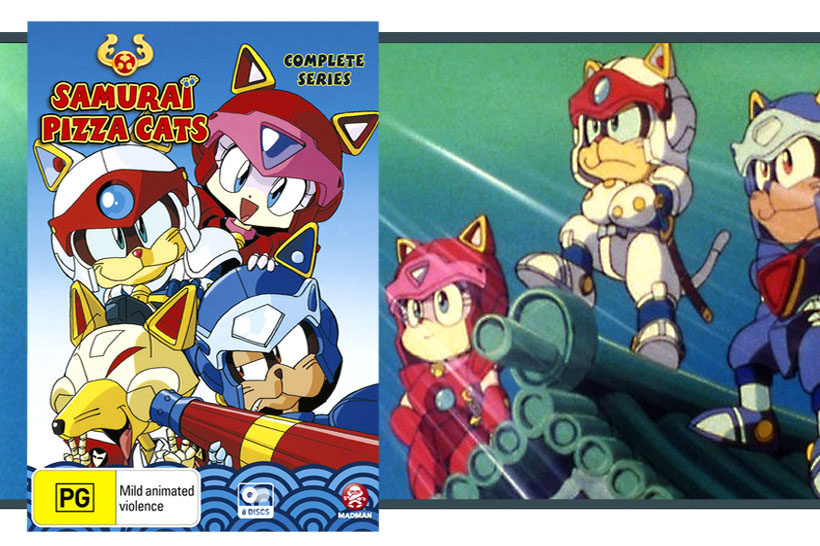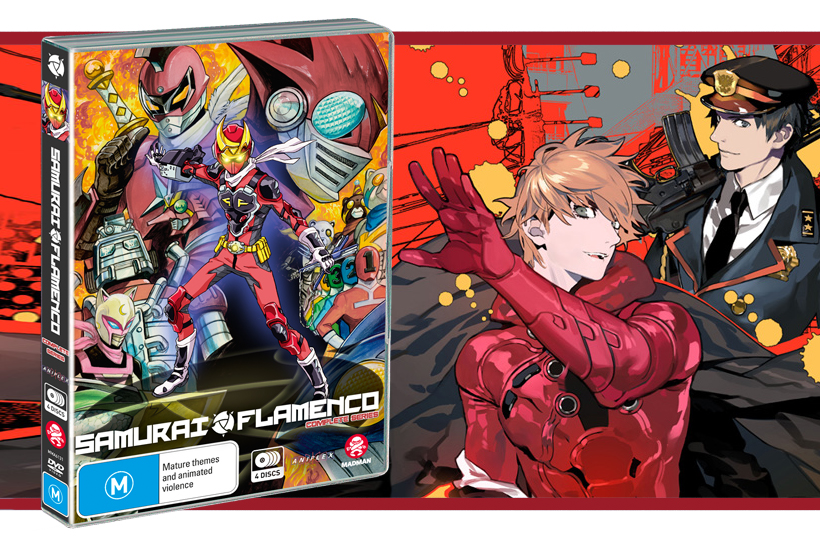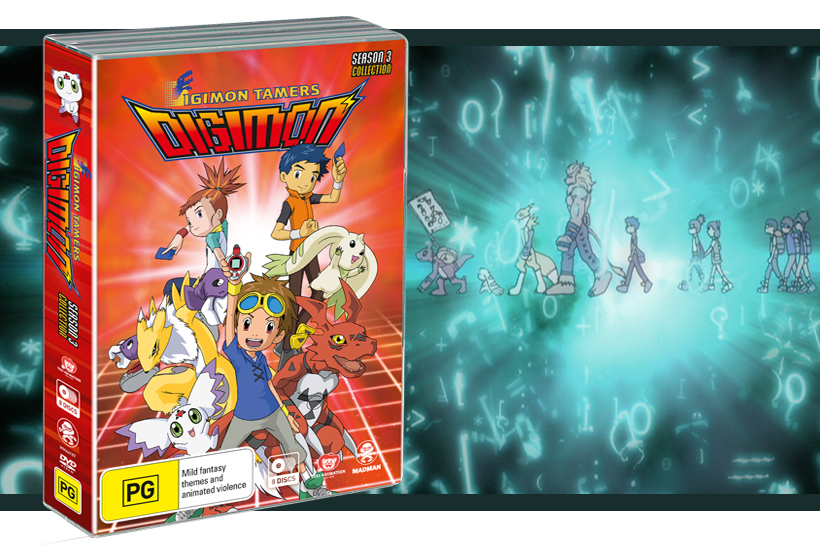In the heart of Little Tokyo resides Pizza Cats, the cities’ most popular pizza joint staffed by Speedy Cerviche, Guido Anchovy, and Polly Esther. But unbeknownst to the robotic anthropomorphic animal citizens of Little Tokyo, Pizza Cats does much more than feed hungry citizens. When they’re not delivering pizzas, Speedy, Guido and Polly make up the Samurai Pizza Cats, a trio of crime fighters tasked with protecting the city from evil-doers. Backed up by co-worker Francine and the other samurai cats that make up the Rescue Team, the three defend the city from Seymour ‘The Big’ Cheese and his army of crow ninjas who seek to overthrow the Emperor and his council.
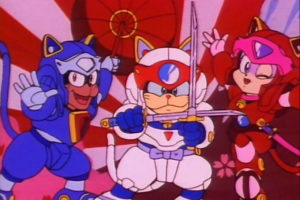
Samurai Pizza Cats is an interesting anime, and its localisation history is a story in itself. The series was initially aired as Kyatto Ninden Teyande in Japan in 1990, and was adapted for North American audiences by Saban Entertainment the following year in 1991. However, it should be noted I use the word ‘adapted’ as loosely as possible. Samurai Pizza Cats rarely mirrors its Japanese counterpart because at the time it was being adapted, scripts translated from Japanese were of poor quality, if they existed at all. What resulted is an anime far more nonsensical and sporadic than its tamer Japanese counterpart that peppers its episodes with pop-cultural references, puns and one-liners between giant robot battles and transforming battle armour.
Whether you enjoy the series will be based on two things. The first is whether you grew up with the series and have a connection to it that exists by merit of childhood nostalgia. The second depends on whether you can endure the onslaught of celebrity references (from Julie Andrews to Fred Savage) and random one-liners that are either too random to get a response other than puzzlement or provoke laughter based on shock value. There’s incidental humour to be had as well, the best example being in the episode where the cats take a trip to the spa. The cats refer to their traditional ryokan style room, complete with tatami and sliding doors as ‘economy class’ because all the furniture is ‘missing’. Speedy also refers to the plate of manju as ’pizza dough balls’, and wolfs them down with gusto. Onigiri – I mean, jelly donuts anyone? That being said, some jokes genuinely work, and dry quips delivered by characters like Francine and The Big Cheese proved especially effective and I caught myself laughing a lot more as the series progressed. But overall it’s the kind of humour that gets tiring in proportion to how long you watch the show for.
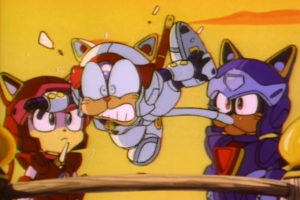
Speedy, Guido and Polly have distinct personalities, but don’t stray far from their character archetypes. A lot of their stories revolve around typical moral lessons such as the power of teamwork and the failings of greed. Which is fine, and entirely appropriate for what the show is trying to be, but as a cartoon aficionado in my youth, there are only so many times I can watch the same kind of character arc before my attention wanders. The Rescue Team features in a lot of episodes but I couldn’t really tell you anything about them because despite their status as part of the Samurai Pizza Cats, they are rarely the focus. The show has a large cast of colourful characters, but I gravitated much more towards the villain The Big Cheese. Though he is distinctly fox-like, the series refers to The Big Cheese as a rat several times. At first I thought it was just an insult towards his character, but it turns out that he is officially a rat in the English version. I guess they were going for a rat vs cat dynamic. Despite this confusion, Big Cheese is a very enjoyable character, from his penchant for wearing beautiful kimono and wigs, to his increasingly ludicrous plots to take over the city. In one episode he plans to switch the genders of all the animals of Little Tokyo by using robot butterflies, eventually revealing that he will take over in the resulting confusion. It’s that kind of show folks.
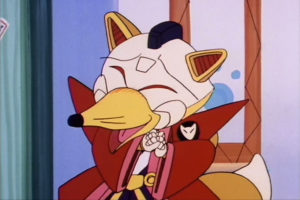
Though I’m unable to get nostalgic for a show I never saw aired, the animation style strikes a chord with me. It reminded me of the cast in Dragon Ball, when characters like Kid Goku were shaped kind of like sacks and their centre of gravity sat firmly in the middle. Like many productions of the time, Samurai Pizza Cats re-uses a lot animation, the most egregious example being Speedy’s fight animation and the introduction of the team during each battle. But the most important thing is that the age of the series doesn’t affect its presentation, as the DVD presents clear, crisp visuals. The opening title and end credits are a spectacle in themselves and there is no marathon mode so you will be sitting through them. No fear though because they are irrefutably catchy and you’ll be singing them with astounding familiarity like you’ve been watching the show since infancy after the first couple episodes.
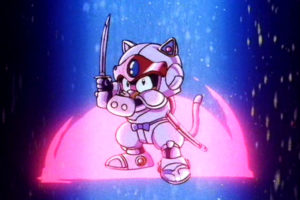
Samurai Pizza Cats is fascinating because it exemplifies many aspects of old anime shows. This isn’t just in its style, but in its localisation history and what kind of show it became in the West compared to its original Japanese version. The complete series collection consists of 52 episodes and only those 52 episodes. If you were hoping to compare the Japanese and North American versions like myself, you’ll be flat out of luck. But if you can ignore snappy one-liners that don’t always stick, there’s a surprisingly effective dry wit that pops up every now and again, and a finale that wraps up the series nicely.
A review copy was provided by Madman Entertainment to the author for the purpose of this review.

